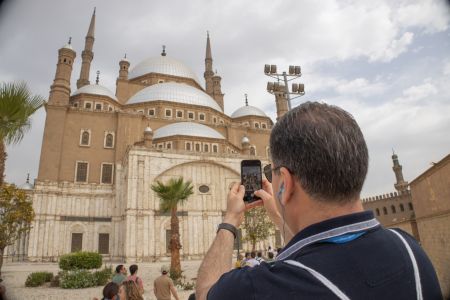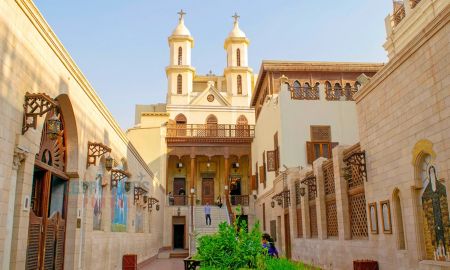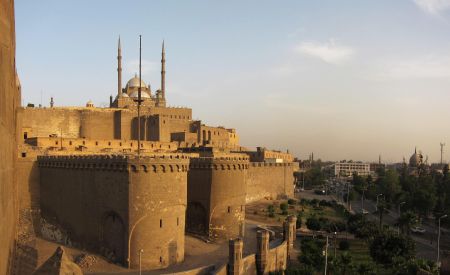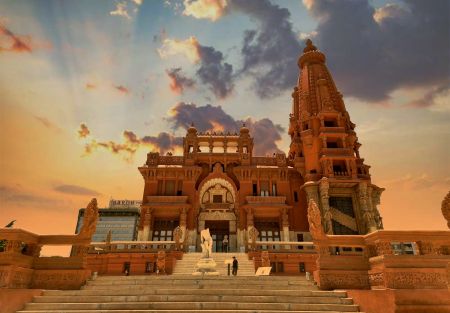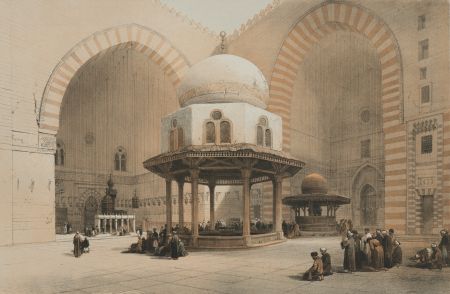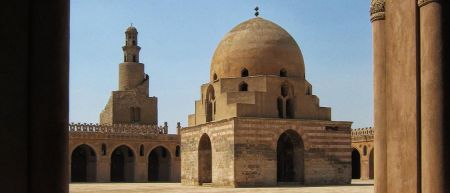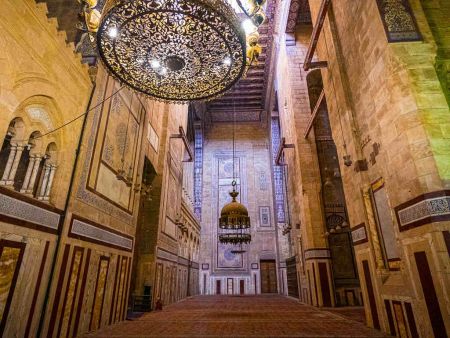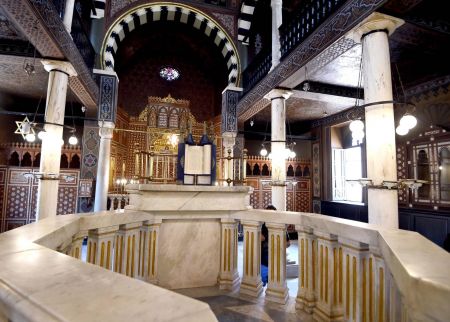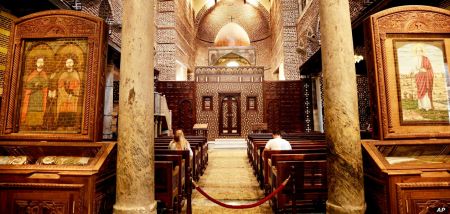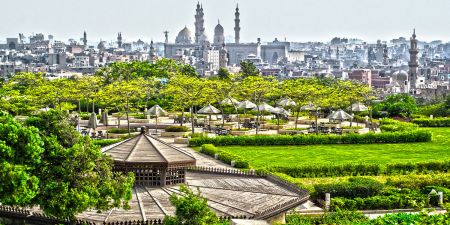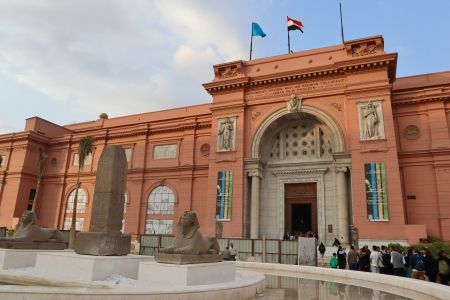Al Azhar Mosque : Cairo’s Beacon of Islamic Scholarship and Architectural Majesty

Nestled in the pulsating heart of historic Cairo, Al Azhar Mosque is far more than a religious sanctuary—it's a living legacy of Islamic intellect, architecture, and cultural resonance. Established over a millennium ago, this awe-inspiring mosque has withstood the rise and fall of dynasties, the transformation of empires, and the evolution of Egypt itself. Founded in 970 AD by the Fatimid Caliphate, Al Azhar quickly evolved into a pioneering center of Islamic education and jurisprudence, eventually becoming the oldest continuously operating university in the world.
Walking into Al Azhar is like stepping into a divine chapter of Islamic history. Its serene courtyards, towering minarets, and intricate mashrabiya windows whisper stories of scholars, revolutionaries, and caliphs. As the intellectual nucleus of Sunni Islam, Al Azhar Mosque exerts immense religious influence throughout the Islamic world, shaping thought, policy, and interpretation for centuries.
In a modern world marked by information overload and spiritual disconnect, Al Azhar remains a fortress of clarity and tradition. It seamlessly fuses architectural magnificence with religious gravity, attracting not only worshippers but also historians, architects, photographers, and cultural travelers seeking meaning in brick, stone, and scripture. Whether you're gazing at its ancient minarets or soaking up the quiet wisdom that blankets its halls, Al Azhar Mosque stands as a radiant symbol of faith, resilience, and knowledge.
The Historical Evolution of Al Azhar Mosque
Founding by the Fatimids in 970 AD
Al Azhar Mosque was constructed under the patronage of Jawhar al-Siqilli, a general of the Fatimid Caliphate. The mosque's name, "Al Azhar," is believed to honor Fatimah al-Zahra, daughter of the Prophet Muhammad, establishing a strong Shia symbolism at its inception. Initially built to serve as the principal mosque of the newly founded city of Cairo (Al-Qāhira), it swiftly evolved into a teaching hub for Fatimid jurisprudence and theology.
Transition from Shia to Sunni Scholarship
After the decline of the Fatimids and the rise of the Ayyubid dynasty under Salah al-Din (Saladin), Al Azhar was repurposed to serve Sunni orthodoxy. This shift marked a profound transformation, aligning the mosque with the Sunni doctrine that continues to define its teachings to this day. The educational curriculum diversified, embracing all four Sunni schools of thought—Hanafi, Maliki, Shafi'i, and Hanbali.
Ottoman and Mamluk Patronage
During the Mamluk and Ottoman periods, Al Azhar underwent extensive renovations and expansions. Grand sultans and benefactors poured resources into enhancing its structure and academic programs. By the 18th century, Al Azhar had grown into a full-fledged university attracting scholars from across Africa, Asia, and the Middle East. It played an instrumental role in resisting colonial ideologies and became a cradle for Egyptian nationalism and religious reform.
Al Azhar in Modern Egypt
In contemporary Egypt, Al Azhar remains a state-supported institution, combining traditional scholarship with modern curricula. Its role now extends beyond theology, touching on sciences, social issues, diplomacy, and interfaith dialogue. It’s also the epicenter for issuing Islamic fatwas, interpreting Sharia law, and guiding the global Muslim ummah.
Step into history with immersive Cairo Day Tours, blending culture, adventure, and discovery.
Book now and explore Egypt’s capital like never before!
Architectural Grandeur of Al Azhar Mosque
A Fusion of Islamic Architectural Styles
Al Azhar Mosque Cairo showcases a melange of Islamic architectural motifs—Fatimid, Mamluk, Ottoman, and modern Egyptian. The layout is characterized by multiple courtyards, vaulted halls, marble columns, and a series of majestic minarets that dominate Cairo's skyline. Each addition over the centuries mirrors the artistic flair and religious sentiments of its time.
The Five Iconic Minarets
One of Al Azhar’s most distinctive features is its five minarets, each built under a different ruler’s vision. These structures soar into the sky with a spiritual elegance, embodying Cairo’s historic title as “the City of a Thousand Minarets.” Their carved stucco, geometric patterns, and decorative calligraphy make them masterpieces of Islamic art.
Courtyards, Arches, and Ornamentation
The mosque’s central courtyard is paved with white marble and framed by arcades, creating a peaceful oasis in bustling Cairo. Inside, visitors find mihrabs adorned with Quranic inscriptions, wooden ceilings with intricate carvings, and walls embedded with mashrabiyas that play with light and shadow.
Al Azhar University – The World’s Oldest Islamic University
Birth of an Intellectual Empire
Al Azhar University was officially established in 988 AD, making it the oldest degree-granting institution in the Islamic world. Initially focused on Quranic interpretation and Islamic law, its curriculum eventually expanded to include logic, grammar, astronomy, philosophy, and medicine—laying the foundations of a holistic Islamic education model.
Global Reach and Influence
Today, Al Azhar University enrolls over 500,000 students and maintains educational missions in dozens of countries. It remains a cornerstone for religious moderation, preaching peaceful coexistence, and combating extremist ideologies. Graduates go on to serve as imams, judges, diplomats, and professors across the Muslim world.
Al Azhar and Modern Education
In recent years, Al Azhar has embraced modern pedagogical tools and digital platforms. Online courses, televised lectures, and international partnerships have allowed it to extend its reach while preserving its spiritual ethos.
Spiritual and Cultural Significance
A Place of Worship for Over 1,000 Years
Al Azhar Mosque has continuously functioned as a place of daily prayer, Friday congregations, and Ramadan night prayers since its inception. Its deep-rooted spirituality, combined with the gentle cadence of Quranic recitations echoing through its halls, provides an atmosphere that moves the soul.
A Hub for Islamic Thought and Dialogue
As a leader in interfaith dialogue, Al Azhar collaborates with institutions such as the Vatican, Al Habtoor Foundation, and UNESCO. It addresses contemporary issues like environmental sustainability, women’s rights in Islam, and the ethics of artificial intelligence through an Islamic lens.
Cultural Tourism in Cairo
Beyond its religious functions, Al Azhar is one of Cairo’s most visited historic landmarks. It attracts tourists interested in Islamic history, architecture, and Cairo’s spiritual heartbeat. Situated near Khan al-Khalili Bazaar, it’s often part of guided walking tours that immerse visitors in Cairo's rich tapestry.
Visiting Al Azhar Mosque – What You Need to Know
Location and Accessibility
Located in Islamic Cairo near Al Hussein Square, Al Azhar is easily accessible by metro, taxi, or even on foot from central Cairo. Its proximity to other major landmarks like the Mosque of Al-Hussein and Khan El Khalili market makes it a convenient and worthwhile stop.
Dress Code and Etiquette
Modest dress is essential. Women are expected to cover their hair and wear long sleeves, while men should avoid shorts. Shoes must be removed before entering prayer areas. Photography is generally allowed but should be respectful.
Best Time to Visit
Early morning visits provide a quiet, reflective experience. Fridays, especially around noon prayer, are the busiest. Ramadan offers a unique atmosphere, with spiritual chants and thousands attending night prayers.
Al Azhar in the Age of Social Media
Digital Outreach and Religious Messaging
Al Azhar’s social media channels broadcast daily lectures, religious fatwas, and scholarly debates. With millions of followers across Facebook, Twitter, and YouTube, it harnesses technology to spread Islamic knowledge in real-time.
Combating Extremism Online
Through its digital platforms, Al Azhar counters radical ideologies and promotes religious moderation. Its Center for Countering Extremist Thought publishes weekly bulletins and educational content targeting youth across the Muslim world.
Frequently Asked Questions About Al Azhar Mosque
What is the significance of Al Azhar Mosque in Islam?
Al Azhar Mosque is one of the most important Islamic institutions in the world. It is not only a mosque but also home to the world’s oldest Islamic university, serving as a global center for Sunni Islamic jurisprudence and scholarship.
Is Al Azhar Mosque open to non-Muslim visitors?
Yes, non-Muslims are welcome to visit Al Azhar Mosque outside prayer times. Modest dress and respectful behavior are essential. Some areas may be restricted during religious ceremonies.
How old is Al Azhar Mosque?
Al Azhar Mosque was founded in 970 AD, making it over 1,050 years old. It has undergone various renovations and expansions over the centuries.
Can I attend prayers at Al Azhar Mosque?
Absolutely. Daily prayers, including Friday sermons and Ramadan Tarawih prayers, are open to the public. Arrive early during busy times to secure a spot.
Where is Al Azhar University located?
Al Azhar University’s main campus is adjacent to the mosque in Islamic Cairo. The university has multiple branches across Egypt and global educational missions in several countries.
What is the best way to reach Al Azhar Mosque?
The mosque is best accessed via taxi or metro. The nearest metro station is Ataba or Bab El Shaaria. It’s also within walking distance from Khan El Khalili and Al Hussein Mosque.




